Related Research Articles

The Curtiss-Wright Model 21 was a United States-built fighter-interceptor, developed by the St. Louis Airplane Division of Curtiss-Wright Corporation during the 1930s.

The Curtiss XA-14 was a 1930s United States airplane, the first multi-engine attack aircraft tested by the United States Army Air Corps. Carrying a crew of two, it was as fast as the standard pursuit aircraft in service at the time.
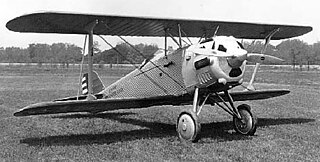
The XP-13 Viper was a prototype biplane fighter aircraft designed by the American company Thomas-Morse Aircraft Corporation. The airplane was delivered to the United States Army in 1929, but they did not adopt it.

The Wright R-975 Whirlwind was a series of nine-cylinder air-cooled radial aircraft engines built by the Wright Aeronautical division of Curtiss-Wright. These engines had a displacement of about 975 cu in (15.98 L) and power ratings of 300–450 hp (220–340 kW). They were the largest members of the Wright Whirlwind engine family to be produced commercially, and they were also the most numerous.

The Wright R-760 Whirlwind was a series of seven-cylinder air-cooled radial aircraft engines built by the Wright Aeronautical division of Curtiss-Wright. These engines had a displacement of 756 in³ (12.4 L) and power ratings of 225-350 hp (168-261 kW).
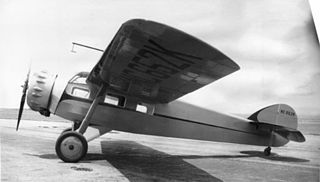
The Cessna Model DC-6 was a 1920s American high-wing four-seat tourer built by the Cessna Aircraft Company. It was used by the United States Army Air Corps as the UC-77/UC-77A.

The Curtiss Fledgling, known internally to Curtiss as the Model 48 and Model 51 was a trainer aircraft developed for the United States Navy in the late 1920s and known in that service as the N2C.

The Travel Air 6000 was a six-seat utility aircraft manufactured in the United States in the late 1920s.
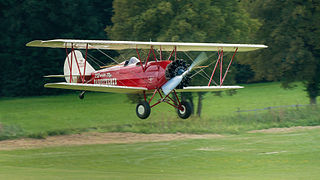
The Travel Air 2000/3000/4000 (originally, the Model A, Model B and Model BH were open-cockpit biplane aircraft produced in the United States in the late 1920s by the Travel Air Manufacturing Company. During the period from 1924–1929, Travel Air produced more aircraft than any other American manufacturer, including over 1,000 biplanes. While an exact number is almost impossible to ascertain due to the number of conversions and rebuilds, some estimates for Travel Air as a whole range from 1,200 to nearly 2,000 aircraft.

The Curtiss Model 55 Kingbird was an airliner built in small numbers in the United States in the early 1930s. It was a twin-engine aircraft with a fuselage derived from the single-engine Curtiss Thrush. The Kingbird had two engine nacelles mounted on the struts on either side of the fuselage that braced the wing and the outrigger undercarriage. A distinctive design feature was the aircraft's blunt nose, located behind the propeller arcs. This allowed the engines to be mounted closer to each other and to the aircraft's centerline, therefore minimising asymmetrical thrust in case of an engine failure. For the same reason, the Thrush's single tailfin was replaced by twin tails on the Kingbird, and the main production model, the D-2 fitted a second horizontal stabilizer and elevator between these fins.

The Wright R-790 Whirlwind was a series of nine-cylinder air-cooled radial aircraft engines built by Wright Aeronautical Corporation, with a total displacement of about 790 cubic inches (12.9 L) and around 200 horsepower (150 kW). These engines were the earliest members of the Wright Whirlwind engine family.

The Wright R-540 Whirlwind was a series of five-cylinder air-cooled radial aircraft engines built by the Wright Aeronautical division of Curtiss-Wright. These engines had a displacement of 540 in³ (8.85 L) and power ratings of around 165-175 hp (123-130 kW). They were the smallest members of the Wright Whirlwind engine family.
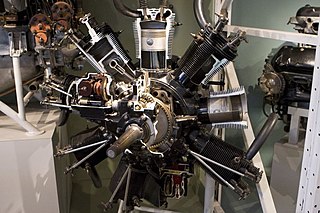
The Wright Whirlwind was a family of air-cooled radial aircraft engines built by Wright Aeronautical. The family began with nine-cylinder engines, and later expanded to include five-cylinder and seven-cylinder varieties. Fourteen-cylinder twin-row versions were also developed, but these were not commercially produced.
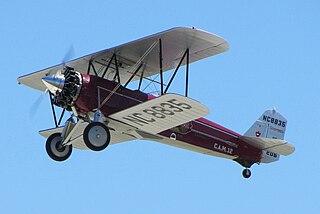
The Stearman C3 was an American-built civil biplane aircraft of the 1920s, designed by Stearman Aircraft of Wichita, Kansas. It was also the first Stearman aircraft to receive a type certificate.

The Boeing Model 6D, a.k.a. Boeing Model 6E, Boeing B-1D and Boeing B-1E, was an American pusher biplane flying-boat built by Boeing between 1928 and 1929.

The Spartan C3 is an American three-seat open-cockpit utility biplane from the late 1920s.

The Stearman C2 was the second aircraft type designed by the Stearman Aircraft company. The aircraft first flew in 1927.
The Yakovlev AIR-6 was a Soviet light utility aircraft of the 1930s. It was a single-engined high-wing monoplane designed by Alexander Sergeyevich Yakovlev, with 128 being built.

The Curtiss/Curtiss-Robertson Model 56 Thrush was a 1929 six passenger high-wing fixed undercarriage single-engine cabin monoplane airliner and utility transport powered by either a Curtiss Challenger or a Wright Whirlwind radial engine and built as an enlargement of the earlier Curtiss Robin. Several were used for record breaking endurance flights by female pilots during the early 1930s including one in which the aircraft stayed aloft for almost ten days.

The Laird LC-B was a three seat, single-engined biplane, built for private owners in the U.S. in the late 1920s and offering a variety of engines. About 35 had been built before production ceased in the mid-1930s. Two have been restored to flight.
References
- ↑ Pelletier 1995 , p. 42
- 1 2 Gunston 2005 , p. 464
- 1 2 3 Pelletier 1995 , pp. 42–43
- 1 2 3 Pelletier 1995 , p. 43
- ↑ Pelletier 1995 , pp. 50–51
- ↑ Bowers 1979 , p. 406
- Bowers, Peter M. (1979). Curtiss Aircraft 1907–1947. London: Putnam. ISBN 0-370-10029-8.
- Gunston, Bill (2005). World Encyclopedia of Aircraft Manufacturers (2nd ed.). Stroud, UK: Sutton Publishing. ISBN 0-7509-3981-8.
- Pelletier, A. J. (1995). Beech Aircraft and their Predecessors. Annapolis, Maryland, USA: Naval Institute Press. ISBN 1-55750-062-2.